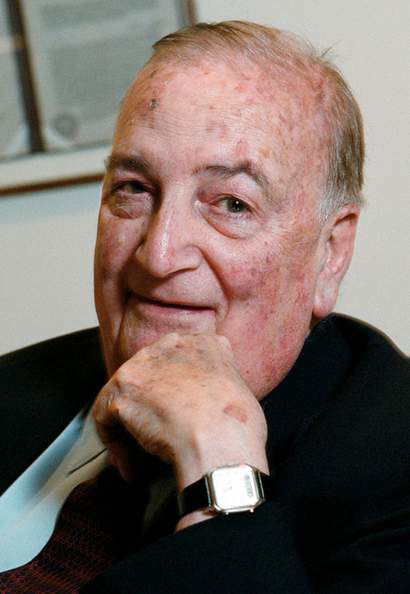Baruj Benacerraf, Nobel laureate in medicine, 90
Published 5:00 am Wednesday, August 3, 2011

- Dr. Baruj Benacerraf, a Venezuela-born immunologist who shared the 1980 Nobel Prize in Physiology or Medicine and served as president of the Boston-based Dana-Farber Cancer Institute, died of pneumonia at his Boston home on Tuesday. He was 90.
Dr. Baruj Benacerraf, a Venezuelan-born immunologist who received a Nobel Prize for his groundbreaking work in exploring why diseases like multiple sclerosis affect some people but not others, died Tuesday at his home in Boston. He was 90.
The cause was pneumonia, according to the Dana-Farber Cancer Institute in Boston. Benacerraf, the son of a textile merchant who had hoped he would carry on the family business, was president of the institute from 1980 to 1991.
He shared the 1980 Nobel Prize in medicine with Dr. George Snell of the United States and Dr. Jean Dausset of France for their decades of work studying the immune system. Their discoveries explained why some people were better able to defend themselves against infection and why certain people were at greater risk of contracting multiple sclerosis, lupus and other autoimmune diseases, in which the body’s immune system attacks its own tissues.
Their research extended to understanding immunological reactions in organ transplants, explaining why the body would often reject a foreign organ and offering insights on the likelihood of success in transplantation.
Benacerraf’s specific contribution was the discovery that the strength of an individual’s immune response was controlled by a group of genes, which he called “immune response genes.” Although such an observation may seem unsurprising today, when advances in genetics have elucidated the role of genes in virtually every biological process, it was an intellectual leap in the early 1960s, when Benacerraf conducted his research.
Failure leads to success
A failed experiment led to his discovery. Benacerraf, then a professor of pathology at New York University, had injected guinea pigs with a foreign substance, expecting to stimulate production of disease-fighting white blood cells in the rodents, just as an invading virus would. But to his surprise, 40 percent of the guinea pigs failed to mount an immune response against the foreign material.
Suspecting a genetic explanation, Benacerraf conducted a series of breeding experiments, which ultimately demonstrated that the immune reactions in the guinea pigs were hereditary. Benacerraf theorized that the genetic variation, which was later found to exist in humans and other vertebrates, was an evolutionary adaptation to ensure that some members of a species would survive onslaughts from mutated viruses.
This genetic variation, while advantageous from an evolutionary perspective, carried unfortunate consequences. The specialness of each individual, Benacerraf proposed, ensured the rejection of transplanted organs, except in cases involving genetically identical donors, like identical twins. The genetic variation would also mean that certain people were more vulnerable to autoimmune disease.
In awarding the Nobel in Physiology or Medicine, the Karolinska Institute in Sweden said, “The area of research opened up by Benacerraf now offers the possibility of analyzing the background of the varying ability of different individuals to mobilize a response to infections.”
Baruj Benacerraf (pronounced bar-OOK ben-ah-seh-RAHF) was born Oct. 29, 1920, in Caracas, Venezuela, the son of Sephardic Jews. His father, born in Morocco, was a textile importer; his mother, born in Algeria, was a homemaker.
He spent most of his childhood in Paris, where his family moved when he was 5 so that his father could more easily buy textiles for resale in Venezuela. As a youngster, Benacerraf often missed school because of asthma; he later credited his illness with fueling his interest in immunology.
Fled France in WWII
His family fled Paris at the start of World War II and eventually settled in New York City, the center of the U.S. textile trade. In high school, he discovered a love of science, a subject he hadn’t studied in France. He went on to Columbia University and received a bachelor’s degree in biology in 1942.
Instead of joining the family business, he made plans to study medicine. But every medical school he applied to rejected him — because, he suspected, he was both foreign-born and a Jew, as he wrote in his autobiography, “From Caracas to Stockholm: A Life in Medical Science,” published in 1998.
His fortunes changed, however, when he obtained an interview at the Medical College of Virginia through a personal connection: The father of a friend was an administrator there. The school, now part of Virginia Commonwealth University in Richmond, admitted him in 1942, one of three Jews and two Hispanics in his class of 80 students.
While in medical school, during World War II, he was drafted into the Army with other medical students as part of a wartime training program. In 1943 he became a U.S. citizen and married Annette Dreyfus, a French student and fellow refugee from Paris whom he had met at Columbia.
He received his medical degree in 1945 and trained as an intern at Queens General Hospital in New York. Commissioned a first lieutenant in the Army Medical Corps, he was posted to Germany with other physicians in 1946 and later assigned to Paris and Nancy in France.
After completing his military service, “motivated by intellectual curiosity,” as he wrote in a Nobel biographical sketch, he “decided upon a career in medical research at a time when such a choice was not fashionable.” He accepted a fellowship in immunology at New York University in 1947.
Very little was known about the immune system at the time. Antibodies had been discovered, but their structure was a mystery. The immunological basis of allergic reactions hadn’t been worked out. Benacerraf found the uncharted territory before him irresistible.








